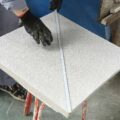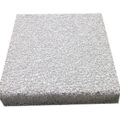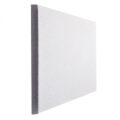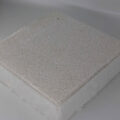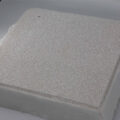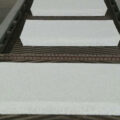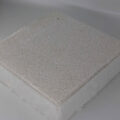Aluminum liquid filtration generally uses foam ceramic filter filtration. When the aluminum liquid passes through the tortuous and interconnected pores in the foam ceramic, the internal debris is deposited on the wall of the pore under the action of fluid power, inertia, interception, collision, and adsorption. So that the clean aluminum liquid enters the casting flow plate. The foam ceramic filter filtration efficiency is directly related to the diameter of the micropores, but the diameter of the trapped debris is much smaller than the average diameter of the micropores.
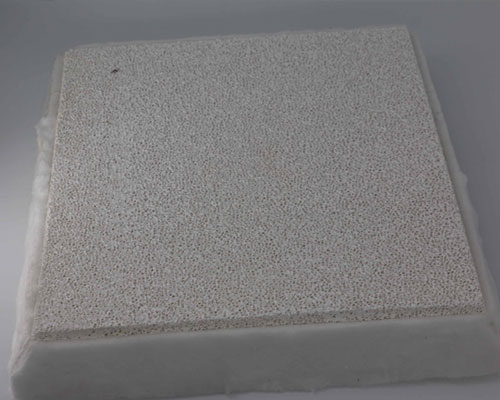
Using a ceramic foam filter with 12 holes/cm and a thickness of 50m can remove 80% of debris and other debris above 100μm. In order to improve filtration efficiency, it is also possible to use glass fiber mesh for coarse filtration first, and then use foam ceramic filter filtration. Tests have proved that liquid aluminum filtration can reduce the breakage rate of 6μm thick aluminum foil by 44% during finishing rolling. Foam ceramic plates are usually replaced once per heat to ensure the passing capacity of the molten aluminum and prevent the debris and slag particles deposited in the pores from re-entering the molten aluminum.
The method of purifying molten aluminum in the furnace can only remove the aluminum material itself and the newly added impurities during the melting process, but cannot eliminate the secondary pollution of the molten aluminum during the casting process. At the same time, due to the large area of the furnace and the shallow depth of the molten pool, it is difficult to spread the flux to every corner of the furnace to effectively purify all the molten aluminum.
Therefore, in the modern melting and casting process, the on-line purification treatment method outside the furnace is used to make the aluminum liquid in the flow furnace or the static furnace, in the special container, and the gas flux convection contact, and then flow into the semi-continuous casting mold or continuous casting. The casting tips and nozzle of the cast-rolling system ensures that all the molten aluminum is effectively purified and prevents secondary pollution.
According to Stokes’ law, the rising or falling speed of solid particles or bubbles in a liquid medium is proportional to the difference between their density and the medium and the square of the particle or bubble diameter, and inversely proportional to the particle size of the medium.
Since the viscosity of molten aluminum decreases with the increase in temperature, during purification treatment, the melt temperature should not be too low to facilitate the oxidation of impurities and gases, but the melt temperature should not be too high. Otherwise, it will aggravate the oxidation of molten aluminum. And inhale. It takes a certain time for the sinking of the impurity particles and the floating of the bubbles to rise. Therefore, after the refinement treatment, the molten aluminum should be allowed to stand for a period of time in the furnace before pouring.

